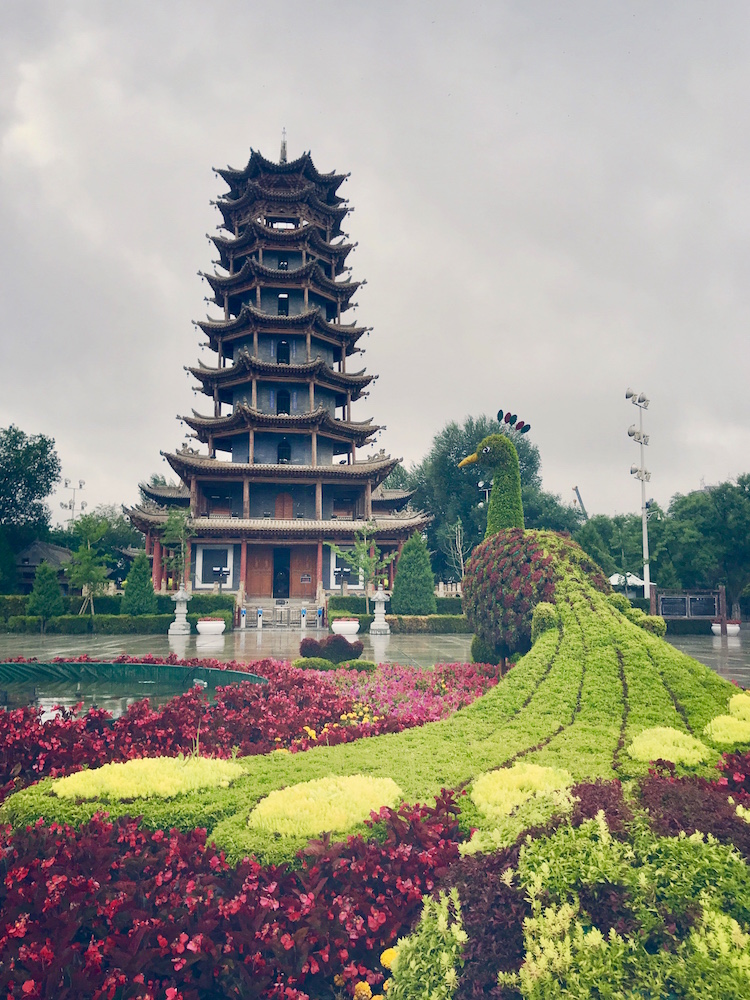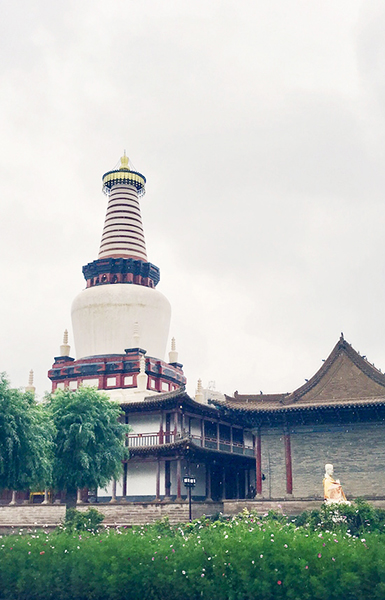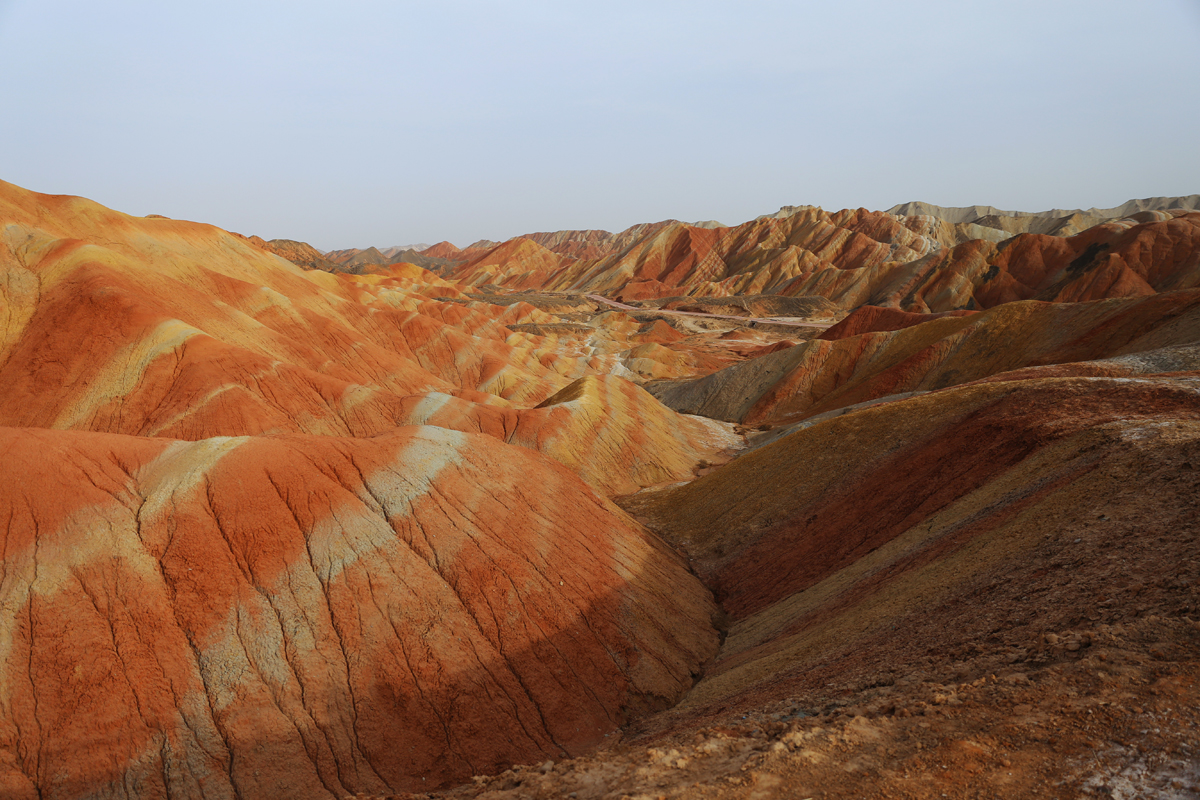
Zhangye is a prefecture-level city situated in the northwest of Gansu province, resting at the heart of the legendary Hexi Corridor. The misty Qilian Mountains lie to its north, while to its south you’ll find Mount Heli and Mount Longshou. The Hei River flows directly through the city and has formed a number of oases, endowing the region with its remarkably luxurious greenery. It acted as a frontier town throughout China’s history, sitting at the centre of the historic natural passageway between the Far East and Central Asia. The name “Zhangye” (张掖), which literally means “to extend the arm”, is an abbreviation of the ancient Chinese saying “to extend the arm of the country, through to the Western Realm” (张国臂掖,以通西域). Yet what it fails to mention is that they weren’t just extending the arm, but also the army!
During the Han Dynasty (206 BC– 220 AD), Zhangye rose to prominence as one of the focal trade hubs along the Silk Road and was thus fiercely defended by the Chinese army against the invading Xiongnu people. It was given its current name in 111 BC but Zhangye Prefecture was originally known as Ganzhou, which is where the “Gan” of Gansu province was derived. Evidently coming up with original names wasn’t the Emperor’s strong point! By the Sui Dynasty (581-618), it had rapidly developed into a metropolis for international trade and, during the Tang Dynasty (618-907), the famous monk Xuanzang even passed through the city on his way to India.
Sadly this would mark the end of the imperial court’s stronghold on the region, as a Tibeto-Burman-speaking people known as the Tanguts soon dominated northwest China and established the Western Xia Dynasty (1038–1227). It wouldn’t return to imperial control until the Yuan Dynasty (1271-1368), which is coincidentally also when Italian traveller Marco Polo decided to settle there for an entire year. He remarked in his travel notes on the city’s impressive size and the magnificence of its religious buildings so, if it was good enough for Marco Polo’s proverbial gap year, we’re sure you’ll agree it’s worth a visit!
Of these magnificent religious buildings, the Five Elemental Pagodas are perhaps the most strikingly unusual. They are all designed after the five elements of ancient Chinese philosophy: metal, wood, water, fire, and earth. The most famous of these is arguably the Wooden Pagoda of the Sui Dynasty which, rather misleadingly, was not actually built during the Sui Dynasty (581-618)! It was originally constructed during the Northern Zhou Dynasty (557–581), but underwent a long period of reconstruction during the Sui Dynasty and required further repairs during the Tang, Ming (1368-1644), and Qing (1644-1912) dynasties. It seems wood wasn’t the sturdiest of the five elements after all!
Nowadays it is stunningly well-preserved and contains the Zhangye Folk Customs Museum, where visitors can learn about the city’s resident ethnic minorities. Over 26 of China’s recognised ethnic minorities call Zhangye home, including large constituencies of Hui, Yugur, and Tibetan people. This means that large parts of the prefecture, such as Sunan Yugur Autonomous County, are entirely dominated by a plethora of unique cultures, where visitors are privy to the fascinating customs of these ethnic peoples.

The Clay Pagoda, one of the other Five Elemental Pagodas, is part of a spectacular complex known as the Giant Buddha Temple. It is widely considered the finest relic of the Western Xia Dynasty and contains China’s largest statue of the reclining Buddha. As a matter of fact, the entire temple was constructed simply to house this giant Buddha! The statue in question is approximately 35 metres (115 ft.) long and 8 metres (26 ft.) wide at the shoulders, making it over 11 times longer than a fully grown anaconda. It has been beautifully painted and gold-plated, which only adds to its overall grandeur. Yet this isn’t the temple’s only claim to fame, since Kublai Khan, founder of the Yuan Dynasty and grandson of Genghis Khan, was supposedly born within its halls.
Just 65 kilometres (40 mi) south of the city proper, the Mati or “Horse’s Hoof” Temple is etched into the cliff-face of Linsong Mountain and houses still more sacred relics, including the legendary hoof-prints of a horse deity. Nowadays it is home to a large Yugur community and is the perfect place to engage with their nomadic lifestyle. That being said, if you’re in the mood for something a little less manmade, you may want to consider a trip to the Zhangye Danxia Landform Geological Park or the Zhangye National Wetland Park.

Resplendent with rolling hills of multiple colours, the Danxia landform rests just 30 kilometres (19 mi) west of Zhangye proper and offers up a unique geological landscape, described by many as a living watercolour painting. The Zhangye Wetland Park is a little closer to home, as it rests on the northern outskirts of the city and offers stunning views of verdant marshes, flowery meadows, and winding rivers. This breath-taking natural scenery, coupled with the many interactive exhibitions on the history of the Silk Road, the plant and animal species that inhabit the wetlands, and the ecological importance of preserving them, is sure to awaken the conservationist in you!
Join a travel with us to explore more about Zhangye: Explore the Silk Road in China